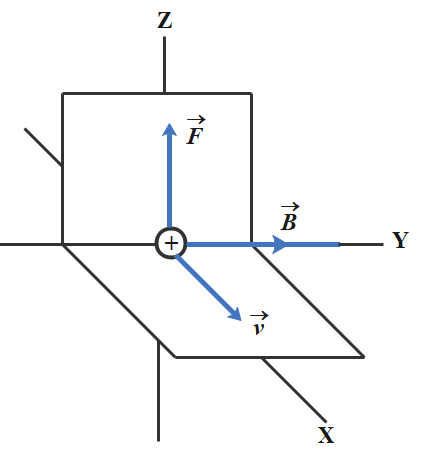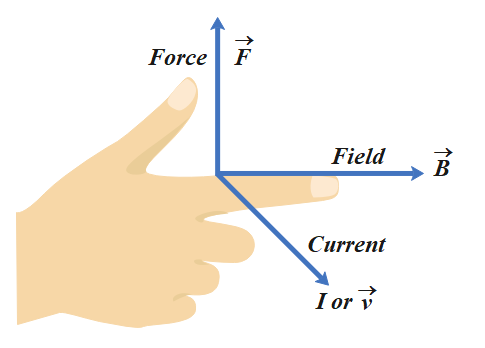
State Fleming’s left hand rule.
Answer
505.5k+ views
Hint: When a charged particle is present in a magnetic field it experiences a force upon it. Fleming’s left-hand rule is used to find the direction of the force vectors acting on the charged particle with respect to the direction of the magnetic field and current in the system.
Complete step-by-step answer:
The electric charges moving in a magnetic field tends to experience a force, while no such force is experienced by the rest or static charges. This phenomenon was first discovered by a Dutch Physicist Hendrik Antoon Lorentz.
The force acting on the charged particle is proportional to the magnitude of the magnetic field, also directly proportional to the charge and it is directly proportional to the component
This force deflects the charged particle sideways and is known as the magnetic Lorentz force.
Mathematically, it is given by:
The directions of magnetic Lorentz force
FLEMING’S LEFT RULE
Stretch the thumb and the first two fingers of the left hand in such a way that they are mutually perpendicular to each other. If the forefinger points in the direction of the magnetic field, central finger in the direction of the current, then the thumb gives the direction of force acting on the charged particle.
The following diagram shows the Fleming’ left hand rule visually:


Note: There is another rule to help find the direction of the Lorentz force acting on the charged particle, namely the right-hand palm rule. This rule states that if we open our right hand’s palm and place it so that the tip of our fingers point in the direction of the magnetic field and the thumb in the direction of the velocity of the positive charge, then the palm faces the direction towards the force.
Complete step-by-step answer:
The electric charges moving in a magnetic field tends to experience a force, while no such force is experienced by the rest or static charges. This phenomenon was first discovered by a Dutch Physicist Hendrik Antoon Lorentz.
The force acting on the charged particle is proportional to the magnitude of the magnetic field, also directly proportional to the charge and it is directly proportional to the component
This force deflects the charged particle sideways and is known as the magnetic Lorentz force.
Mathematically, it is given by:
The directions of magnetic Lorentz force
FLEMING’S LEFT RULE
Stretch the thumb and the first two fingers of the left hand in such a way that they are mutually perpendicular to each other. If the forefinger points in the direction of the magnetic field, central finger in the direction of the current, then the thumb gives the direction of force acting on the charged particle.
The following diagram shows the Fleming’ left hand rule visually:


Note: There is another rule to help find the direction of the Lorentz force acting on the charged particle, namely the right-hand palm rule. This rule states that if we open our right hand’s palm and place it so that the tip of our fingers point in the direction of the magnetic field and the thumb in the direction of the velocity of the positive charge, then the palm faces the direction towards the force.
Latest Vedantu courses for you
Grade 11 Science PCM | CBSE | SCHOOL | English
CBSE (2025-26)
School Full course for CBSE students
₹41,848 per year
Recently Updated Pages
Master Class 10 Science: Engaging Questions & Answers for Success

Master Class 10 Social Science: Engaging Questions & Answers for Success

Master Class 10 Maths: Engaging Questions & Answers for Success

Master Class 10 English: Engaging Questions & Answers for Success

Class 10 Question and Answer - Your Ultimate Solutions Guide

Master Class 9 General Knowledge: Engaging Questions & Answers for Success

Trending doubts
Give 10 examples of unisexual and bisexual flowers

Draw a labelled sketch of the human eye class 12 physics CBSE

Differentiate between homogeneous and heterogeneous class 12 chemistry CBSE

Differentiate between insitu conservation and exsitu class 12 biology CBSE

What are the major means of transport Explain each class 12 social science CBSE

What is the difference between resemblance and sem class 12 social science CBSE




